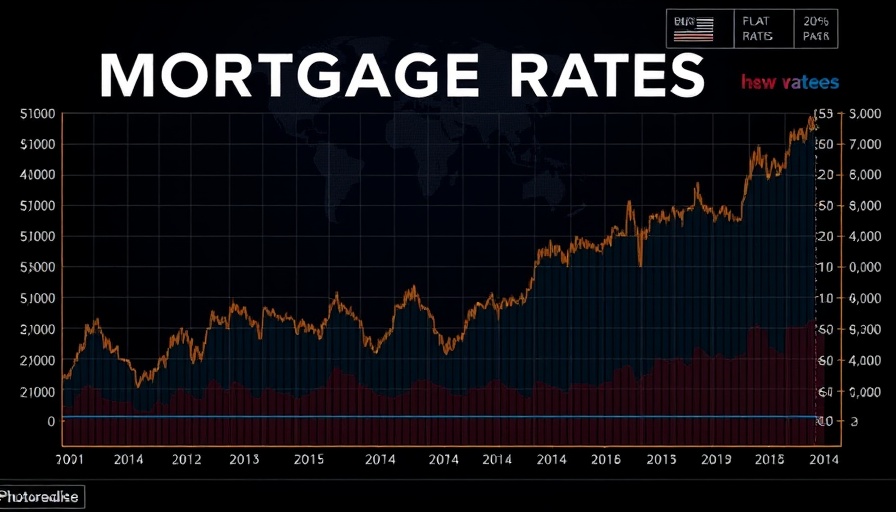
Mortgage Rates: A Calm Before the Storm
This week started with a notable flatness in mortgage rates, resting at 6.81%, indicating a period of stability after what has been a tumultuous year in the financial markets. However, this tranquility is expected to be short-lived. As the week progresses, the absence of volatility on Monday does not suggest a forecast for the rest of the week; instead, experts warn that market dynamics will likely shift as upcoming economic data begins to influence rates.
The Role of Economic Data in Rate Movement
Mortgage rates are heavily influenced by bond market dynamics, with economic data serving as a catalyst for fluctuations. This week, Monday's calmness was due to a lack of significant economic indicators, making way for speculation about rising rates later in the week. As financial analysts emphasize, the effect of economic releases—such as employment figures, inflation rates, and consumer spending—is pivotal in creating movement in mortgage rates. Anticipation for new data may instigate fluctuations as the week unfolds, with lenders and consumers alike poised for potential shifts.
What Lies Ahead: Key Indicators to Watch
Looking forward, important metrics like the Consumer Confidence Index and jobless claims data are expected to surface mid-week. These indicators will be scrutinized for any signals that can sway investor sentiment and, consequently, mortgage rates. Historically, periods of economic uncertainty often predict increases in borrowing costs, as lenders adjust their rates to accommodate anticipated risks and shifts in consumer behavior.
Impact of Treasury Auctions on Mortgage Rates
While not significantly affecting Monday’s rates, Treasury auctions are central to understanding broader market trends. Even a slight adjustment in borrowing estimates, which was noted this week, can impact investor appetite for Treasury securities, influencing mortgage rates indirectly. Experts suggest that fluctuations in Treasury yields, which are partly dictated by these auctions, will reflect on the mortgage landscape—calling for keen observation from both lenders and borrowers going into the busy week.
Local Market Considerations Amid National Trends
Regionally, the mortgage landscape can vary significantly based on state economic conditions. For local Ohio markets—for example—factors like home inventory levels, demand, and regional economic health are crucial. This unique context means local consumers may feel the effects differently than national trends suggest. Understanding these local dynamics can make a critical difference for home buyers and sellers navigating the market.
Concluding Thoughts: Preparing for Market Volatility
As the week unfolds, it is essential for both consumers and industry professionals to remain vigilant. With rates currently exhibiting stability, proactive strategies may be beneficial in anticipating potential increases in the near future. Staying informed about economic data releases and reacting promptly can empower consumers in a fluctuating market.
 Add Row
Add Row  Add
Add 




Write A Comment